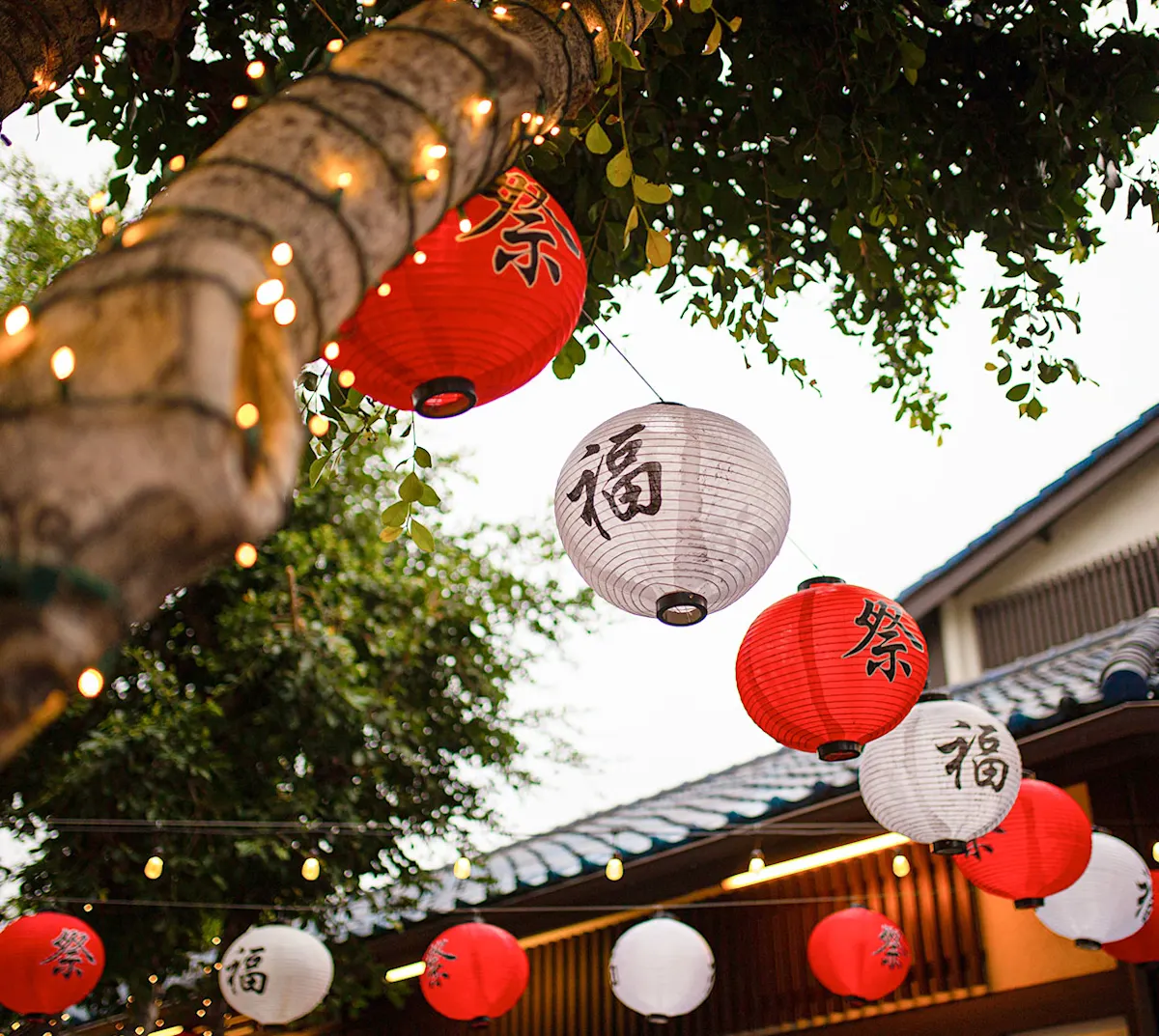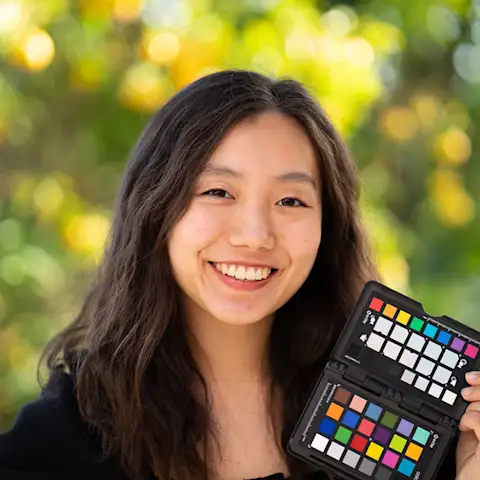It’s a lazy afternoon in Los Angeles’s Little Tokyo, but lazy afternoons here are still bustling. Within the neighborhood’s six blocks, red and white lanterns wobble in the breeze as you walk through the Japanese Village Plaza. On this winding path, cobalt-tiled storefronts abound, offering layered, crepe-like Hiroshima-style okonomiyaki at Chinchikurin, puffy, meat-filled buns and custard bread at Yamazaki Bakery, and Mexican/Japanese/everything fare at Sushi Gala, whose offerings range from beef ramen to mozzarella sticks to Philadelphia rolls.
Both a community-driven neighborhood built by generations of Japanese American locals and a hot spot for young Angelenos, Little Tokyo straddles two incongruous visions of what a neighborhood can be. Originally founded in 1884, Little Tokyo is one of only four historic Japantowns in the country, which include LA’s Sawtelle Japantown. Bonded through tragedy and success, the community remains tight, determined to preserve the neighborhood’s distinct identity.
Little Tokyo has also recently become a hub for a contemporary vision of Japan. Now more than ever, flocks of young locals enjoy the scene, where new shops sell trendy Japanese drinks, food, and beauty and health products. Yet right next door to the new boba shops and matcha stores, decades-old Japanese-Western diners and ramen shops offer a glimpse into the past. Japanese grandmas, having lived in the area since the ’70s, walk alongside young couples as they both shop at the local supermarkets.
Simultaneously brimming with youth and rich with history, Little Tokyo is one of the few places in the city where you can take a walk through time. We think the below spots best showcase Little Tokyo’s rich offerings.
Evergreen Classics
Daikokuya
One of the first ramen joints in the entire city, Daikokuya was the first in LA to fully embrace the creamy, rich, unctuous world of full-fat pork tonkotsu broth. The spicy miso is a fantastic, slightly less rich alternative that's only a touch spicier than regular broth. Complete your experience with the sleeper hit house coleslaw; its surprisingly light, sweet soy-mayo dressing helps cut through all that porky goodness.
Even after 20 years, this old-school ramen-ya is a pilgrimage site for tourists and locals alike, and once you pass under the restaurant’s highlighter-yellow awning into the restaurant, you’ll realize why. With its vintage Japanese posters, wooden booths, and no-frills countertop overlooking the steaming, clanging kitchen, eating at Daikokuya transports you to a different time.
Marugame Monzo
Right next door to Daikokuya sits Marugame Monzo, LA’s udon mecca. Like its neighbor, Monzo has been a revolutionary for the Los Angeles udon scene, albeit through a very different approach.
The udon comes hot or cold, traditional or modern. Purists stay with simple options like hot kake udon with a flurry of tempura droplets, or the heartier beef udon with thinly sliced soy-and mirin-braised beef. On a chilly day, the curry udon, slicked with rich sauce and topped with either pork or chicken, tastes like pure comfort. Alternatively, in the summer heat, opt for an order of zaru (chilled) udon or delightfully tart ume shiso udon, where the cold noodles are noticeably taut and chewy.
A meal at Monzo isn’t complete without trying the uni cream, a silky, savory revelation that hints of the sea, the sauce clinging to the slippery udon noodles. Another innovative alternative is the miso carbonara, replete with the eggy, cheesy, porky sauce.
No matter your order, purist or modern, hot or cold, the star will always be the versatile, dense, delightful noodles.
Old-School Establishments
Kouraku
Existing in its current iteration since 1986, Kouraku has remained charmingly old-school in model and outlook, becoming a living fossil of Little Tokyo. Before his passing in 2020, owner Hiroshi Yamauchi was determined to maintain Kouraku’s identity and post-World War II era cuisine, especially amid Little Tokyo’s rapid development over the past decade. Kouraku’s retro yо̄shoku (Japanese-style Western food) transports you back to 1970s Showa Japan, an era of booming business, neon lights, and cheap late-night feasts.
Like any great diner, the menu is comprehensive. Curries are the most familiar fare: a pool of spiced gravy against a white cliff of rice, topped with pork, chicken, menchi katsu, Hamburg steak, or fried shrimp. The katsudon is simultaneously crispy and soft, steaming hot, and incredibly comforting. The pork katsu briefly bathes in a soy-mirin sauce and a mess of onions before ribbons of egg are drizzled atop.
Kouraku also offers its take on omurice, a quintessential yо̄shoku diner dish, through the tenshin chahan annkake: a soft shrimp omelet draped over pork fried rice, surrounded by a moat of clear gravy. For full diner mode, be sure to order a side of potato-pork croquette, karaage, gyoza, or the aforementioned chahan (Japanese-style fried rice). The latter two are rich with caramelized flavor from the decades-old cast-iron pan they were cooked in.
Suehiro
Two doors down from Marugame Monzo is Suehiro, another timeless Japanese diner. Family-owned and over 50 years old, Suehiro’s food is perfect for a quiet feast with your closest loved ones. You can’t help but feel taken care of by the Suzuki family’s second-generation owner Kenji, who continues to run the business with pride. Like Kouraku’s Hiroshi Yamauchi, the Suzuki family has preserved Suehiro’s post-war identity through its dedication to Japanese and Japanese-American comfort food.
At a jack-of-all-trades restaurant like Suehiro, the less fussy your order, the more you’ll be rewarded. The noodle dishes include the trifecta of ramen, udon, and soba, but it’s the homestyle foods that are the most compelling. Heal your soul with a plate of beef stew Hayashi rice, or perhaps a Hamburg steak, steaming hot with rich demi-glace sauce, or lightened with grated daikon and sour ponzu. Entrees like mixed tempura and pork or chicken katsu need little adornment. Their careful preparation and loving touch shine in simplicity. The house special, a miso-marinated stir fry with a protein of your choice, isn’t wholly authentic by any means, but it tastes like home, even if you’ve never had it before. Bubbling nabemono (hot pot-type soups and stews), like the soy-based sukiyaki, is Japanese comfort food at its best. If you’re craving something lighter, brothy chazuke is ideal. It’s topped with saline tarako (codfish roe), and/or delicate salmon; the simple flavoring leaves you refreshed for the day.
Grocery Stores
Marukai
Marukai offers anything you could possibly want in a supermarket. Established in 1965 in Hawaii, it has remained one of the few markets to focus on Japanese imported goods. With its abundance of Japanese and American foods and products, as well as a smattering of Hawaiian goods, the store is a one-stop shop, offering plenty of variety for the modern customer.
The produce section offers a strong selection of fresh Asian vegetables, like Japanese cucumber, daikon, and local shiitake mushrooms. The fish section includes glistening ikura and fresh uni. Japanese soft drinks are in abundance, including emerald-green melon soda, cans of UCC milk coffee, and every variation of Calpico. For lunch, pair your drink with a katsu bento, shrimp tempura rolls, or a salmon onigiri for a quick, cheap feast. And do yourself a favor and buy some Botan rice candy or Hawaiian Host macadamia chocolate for a sweet snack.
Nijiya
Located in a bend of the Japanese Village plaza, Nijiya’s storefront is unmistakable thanks to its sky-blue “rainbow” logo, meant to represent a bridge between Japan and the United States. The market functions as more of a boutique grocer, specializing in Japanese products. Unique and delightful finds include UCC’s Hawaii Kona blend, Ito En’s vegetable and fruit shots (alongside their standard green and jasmine teas), and Maeda En ice cream and sherbet, with flavors like green tea, mango, lychee, and the elusive, sophisticated adzuki. Specialty produce includes Tokyo negi, an allium whose flavor lies between a leek and a scallion, and organic alii (king oyster) mushrooms. Buy a package of organic premium miso and a premade chirashi sushi, and you’re halfway to a light, healthy Japanese dinner.
This particular Nijiya location (which is part of a California-Hawaii chain) also prioritizes top-quality pre-made foods, with variations on Japanese bento classics, like glistening nigiri sushi, fresh onigiri, and rich chicken karaage bento.
Snack Time
Midori Matcha
The understated Midori Matcha specializes in matcha and hojicha lattes, soft serves, and coffee. All drinks are made with ceremonial-grade matcha, perfectly balanced and not too sweet.
A classic matcha latte, made with your choice of milk and level of sweetness, is simplicity at its best. The rose matcha latte’s floral rose water complements the earthier matcha, especially when rounded out with oat milk and topped with crushed rose petals. With its pink, white, and green strata, the strawberry matcha latte is strikingly eye-catching and a touch sweeter than the other drinks, tasting more like dessert than beverage.
MILK+T
MILK+T’s tall, shimmering drinks are extremely photogenic, the picture-perfect snack for a hot afternoon or late-night dessert. Originating as a boba truck, the queer-owned shop made waves with its self-serve model, where customers made their own, entirely personalized drinks. With its aesthetic glass jars and cool vibes, the truck was a huge success, leading to the opening of the Little Tokyo flagship location.
Milky drinks, like classic milk tea and Thai tea, are evergreen classics. More unique options include the Honey Bear, a blend of green milk tea and wildflower honey, and the Piglet, a pastel-pink concoction of coconut milk and homemade strawberry syrup. Go for fruitier offerings like the P.M.G., a pomegranate-mango green tea blend, or the cucumber and watermelon-spiked Little Tokyo, if you want some lighter options.
Late at night is when MILK+T’s premium drinks enthrall. The towering, coyly named Guilt Trip borders on obscene, a blend of milk swirled with chocolate, caramel, and brown sugar with a scoop of ice cream atop. (It’s best ordered at 50 percent sweetness, given its intensity.) For something classy, Feelin Salty is great; the sea salt balances the burnt-sugar caramel milk tea and vanilla ice-cream. All drinks come with optional toppings, ranging from boba to aloe vera to grass jelly. Mix and match to your heart’s content — MILK+T is happy to oblige.
Discover Los AngelesPhoto credit: Ken Hilton on Unsplash






